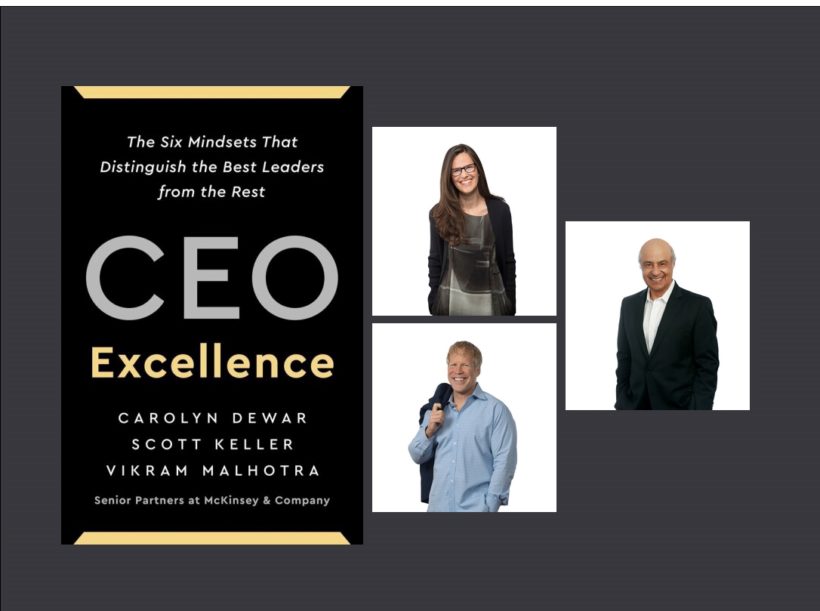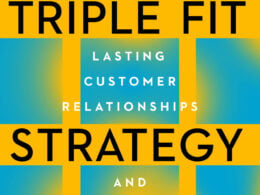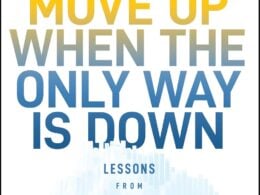Excerpted from “CEO EXCELLENCE: The Six Mindsets that Distinguish the Best Leaders from the Rest.” Copyright © 2022 by Carolyn Dewar, Scott Keller & Vikram Malhotra. Excerpted with permission by Scribner, a division of Simon & Schuster, Inc.
The 1992 US Men’s Olympic “Dream Team” squad included some of the greatest players in basketball history: Charles Barkley, Larry Bird, Patrick Ewing, Magic Johnson, Michael Jordan, Scottie Pippen, and Karl Malone. All were consummate professionals with a track record of not only being all-star players but also playing on all-star teams. Yet in their first month of practice, the Dream Team lost to a group of college players by eight points in a scrimmage. In the words of Michael Jordan: “We got killed today, we’re out of sync, we have no continuity.”40 Scottie Pippen summarized: “We didn’t know how to play with each other.”
Lesser known than the outcome of the scrimmage is how the loss came to be. Coach Chuck Daly, who was chosen for his ability to manage personalities and egos, decided not to make any of the adjustments one would have expected as the game went on. “He knew what he was doing,” according to assistant coach, Mike Krzyzewski. “He threw the game. Not many people would have done it and he did it. From then on, he had a way to say, ‘You know, you could lose.’ It was brilliant on Chuck’s part to orchestrate that.”
The psychological wakeup call that Coach Daly orchestrated was what the team needed. Any arrogance or complacency was replaced by teamwork and hunger. The next day in training camp the tables were turned as the Dream Team soundly beat the college players. Fast forward to the Olympics and the Dream Team scored more than a hundred points in every game and easily took home the gold.2
In the corporate world, most teams operate like the Dream Team did in their scrimmage. Only 6 percent of top HR executives, those whose job includes helping to ensure good teamwork takes place, agree with the statement that “Our executive team operates as a well-integrated team.” Further, when executives are asked to assess how effectively their top team works together versus its potential, they rate it only a five on a scale of ten. As with the Dream Team’s early stumbles, the reason for these challenges is typically less about the individual team members, and more about the dynamics of how the team works together.
As with the Dream Team’s early stumbles, the reason for these challenges is typically less about the individual team members, and more about the dynamics of how the team works together.
DSM’s Feike Sijbesma reinforces the point. “Based on my experience, in principle it’s right to say you need to have a team with the right people. But the notion that you can fire the weaker people in the team, just hire good people, and now you have a good team is too simple.” Instead, he explains, “What really makes the team successful is the way the individuals, whatever their nature, deal with each other. It’s not only the bricks but also the cement! That has an even bigger impact on results.”
But how hard can it be to get a team of professionals working well together? Very.
Group dynamics are complex and full of contradictions, as Dr. Kenwyn Smith and Dr. David Berg argued in their seminal work, Paradoxes of Group Life. Here are just three examples: People feel pressure to conform to the group, yet the power of the group comes from leveraging the individuality of its members. A team leader must ask success-oriented people to risk failure. The work of those in power positions is to create the conditions in which others are powerful. Adidas’s Herbert Hainer adds to these complex dynamics the fact that: “Executives tend to be alpha leaders and competitive,” and it’s easy to see why a high-performing top team is not a foregone conclusion, even when it’s made up of highly talented individuals.44
“In principle it’s right to say you need to have a team with the right people. But the notion that you can fire the weaker people in the team, just hire good people, and now you have a good team is too simple.”
When Westpac’s Gail Kelly took over as CEO, Australia was in the early stages of the global financial crisis, which meant that she couldn’t compose her team the way she wanted to. Too many issues needed immediate attention, and the level of uncertainty put a premium on retaining the institutional knowledge and expertise of the old guard. Additionally, she was only the second person to be brought in from outside the company over its two- hundred-year history, and as such employees viewed her with a degree of skepticism—especially members of her team who felt they, not she, deserved to be CEO. Further, her predecessor had largely dealt with each team member one-on-one, discussing strategic plans for the business units, resource allocation decisions, and key talent decisions individually. The result was that a number of executives around the table habitually operated in a siloed, command-and-control manner.
Without a high degree of team trust and collaboration, Kelly knew progress toward her vision would be stifled, and that making it through the crisis would be far more difficult. She therefore relentlessly built her group of twelve direct reports into a high performing team through a series of off-sites, having them do the work of the transformation together. The purpose of the top team was clarified, behavioral expectations were set, and trust was built through facilitated sessions that broke down barriers between individuals. Over time, as the company began emerging from the global financial crisis, Kelly found ways to fine-tune the composition of her team. In the end, she attributes a significant portion of her success during her seven years to having placed high demands on teamwork. The results speak for themselves: The value of the company more than doubled from $38 billion to $79 billion, and Kelly herself received multiple accolades for being among the world’s best and most influential leaders.
In keeping with how Kelly took on the team dynamics challenge at Westpac, the best CEOs build high performing teams by . . .
. . . ensuring that their team does work that only it can do
. . . clearly defining what it means to be a member on the “first team”
. . . combining dialogue, data, and speed in decision-making . . . investing regularly in team building.
Let’s examine the principle of “doing the work that only the team can do.”
In his 1958 book The Pursuit of Progress, C. Northcote Parkinson described a common way a team can become dysfunctional. He tells the story of an executive team that was gathered to make three investment decisions. First, they discussed the investment for a £10 million nuclear power plant. This decision was approved in two and a half minutes. The next agenda item was to decide which color to paint their bike shed (total cost about £350). After a forty-five-minute discussion, the decision was made. Third, the staff needed a new coffee machine, which would roughly cost £21. The committee discussed this topic for one hour and fifteen minutes and decided to postpone the decision until the next meeting.5
The story illustrates what is known as the “law of triviality” (also referred to as the “bike shed effect”), where groups of people have a strong tendency to give disproportionate attention to trivial issues and details—in particular, those the entire group can relate to (and therefore have strong opinions about). The bike shed effect often leads to team members voicing complaints that “we spend too much time in meetings,” to which the well-intentioned response is to consolidate meetings. This only exacerbates the problem, however. More ends up packed into less time in a less effective format, making the time spent feel even more senseless. Our research and that of others fully backs up how real these dynamics are. Only 38 percent of CEO direct reports feel their top team is focused on work that truly benefits from a top-of-the-house perspective, and only 35 percent feel the right amount of time is allocated to important topics.
This isn’t the case when the best CEOs are at the helm. These leaders make sure that only needle-moving work items are on the agenda. Thermo Fisher Scientific CEO Marc Casper shares his philosophy: “One of the reasons for our success is the ‘ruthless prioritization’ of what we work on together. We’re OK with letting things be mediocre that aren’t on our list of priorities. That’s perfectly fine. The key to success is that we focus our time and energy on what really matters.”
Priority work for the top team typically includes: corporate strategy (priorities, targets, M&A), large-scale allocation of resources, identifying synergies and interdependencies across business units, validating decisions that significantly affect all employees, assuring delivery of company financial targets, providing direction for major company-wide projects, reinforcing the desired company culture (including individual and collective role modeling), and building the company’s leadership bench strength (which includes providing feedback to one another).
“One of the reasons for our success is the ‘ruthless prioritization’ of what we work on together. We’re OK with letting things be mediocre that aren’t on our list of priorities. … The key to success is that we focus our time and energy on what really matters.”
What teams should not focus on are topics that can be done better in individual functions, lines of business, or smaller subsets of the group. For example, quarterly business performance reviews are done with a subset of corporate leaders (e.g., CEO, CFO, and CHRO) and individual businesses, unless there is a cultural reason to combine the reviews into one session. Corporate governance and policy decisions (e.g., risk management controls and processes) are typically taken by a subset of leaders, and those decisions are then shared broadly so that the team can execute against them.
“CEO Excellence: The Six Mindsets That Distinguish the Best Leaders from the Rest” by Carolyn Dewar, Scott Keller and Vikram Malhotra is available March 15, 2022, and can be purchased below via StartupNation.com.






